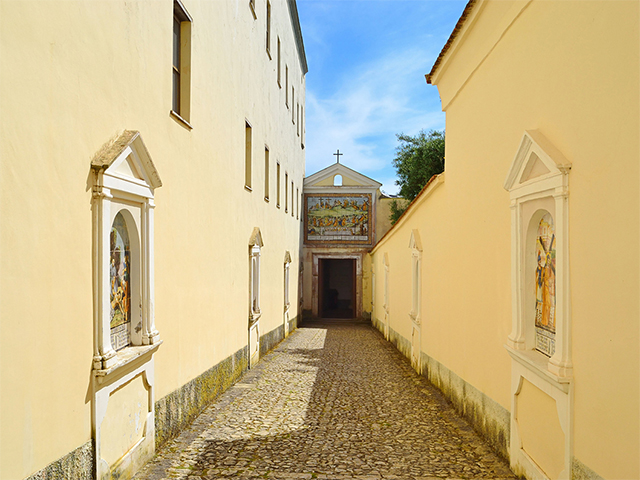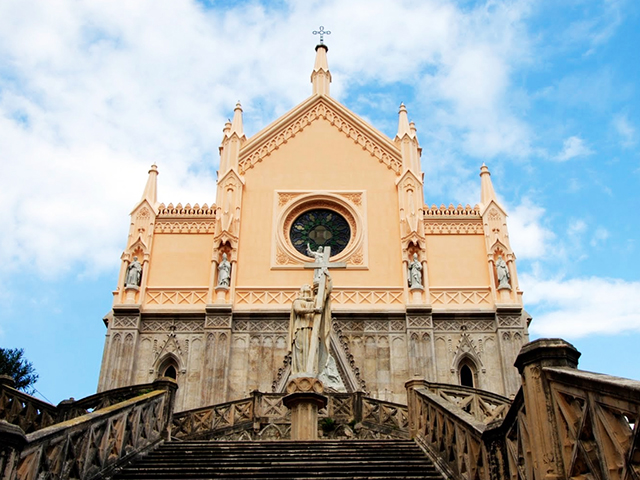Gaeta: the Cathedral of Saints Erasmo and Marciano and of Santa Maria Assunta
The Cathedral of Saints Erasmo and Marciano and of Santa Maria Assunta: a must stop in Gaeta! Find out what to see...If you' re planning to visit the beautiful city of Gaeta, you can' t miss the Cathedral of Saints Erasmo and Marciano and of Santa Maria Assunta. You should go there after a visit to the St. Francis'Curch.
Built in the 10th-11th century on a pre-existing 7th century church, this cathedral is dedicated to Santa Maria del Parco, hence it is also known as the Cathedral of Santa Maria Assunta.
You can see the beautiful neo-Gothic facade (built in 1903) overlooking Via del Duomo and, on top of the central cusp, a statue of the Immaculate.
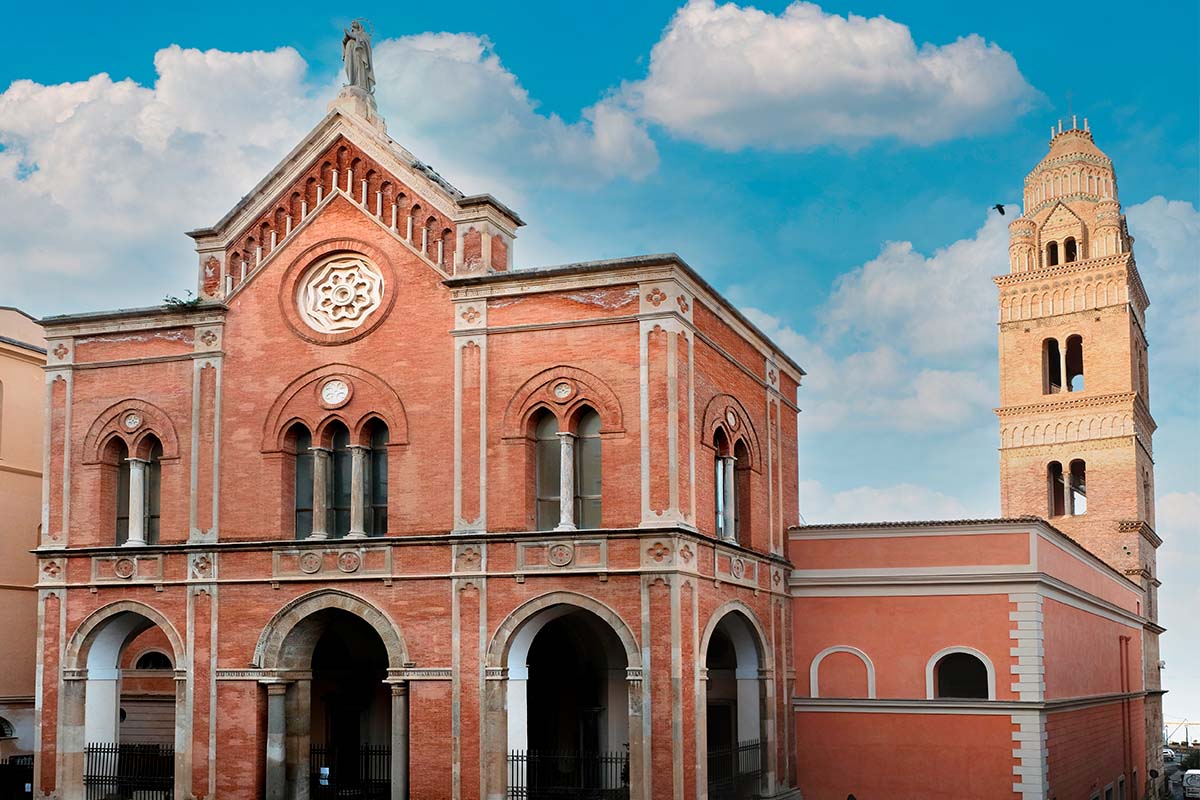
The Cathedral of Saints Erasmo and Marciano and of Santa Maria Assunta: the facade
The Cathedral of Saints Erasmo and Marciano and of Santa Maria Assunta: history
After the earthquake in 1231, the Cathedral was rebuilt with seven naves. It was later restored in neoclassical style by Pietro Paolo Ferrara.
At the end of World War II, the cathedral was partially restored. The works were completed in 1950. Finally, it has been recently closed for restoration works, but reopened for worship in 2014. The liturgical furnishings and the medieval decorations are particularly noteworthy.
Two significant events took place in the cathedral:
- On October 17, 1962 Cardinal Giovan Battista Montini, future Pope Paul VI (1963-1978), made a stop to pray in the cathedral;
- On June 25, 1989 Pope John Paul II (1978-2005) visited the cathedral and part of the diocese, declaring Gaeta as " city of Mary, of the Immaculate".
Now let's discover what to see in the Cathedral of Saints Erasmus and Marciano and Santa Maria Assunta.
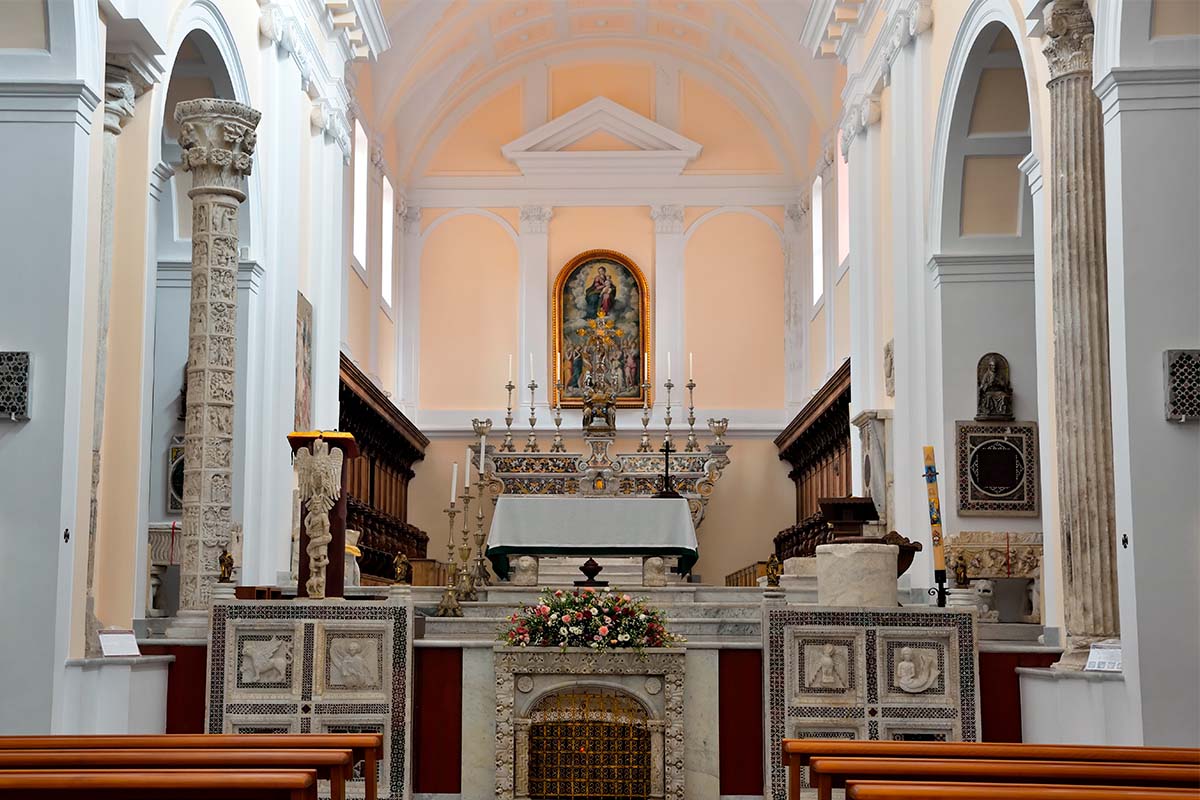
The Cathedral of Saints Erasmo and Marciano and of Santa Maria Assunta: the interior
The bell tower
The impressive bell tower was built between 1148 and 1279 and it's possible to see different artistic influences (Western and Islamic) It is located near the sea, precisely behind the church, where the entrance of the ancient church was located.
It is a real gem designed by Nicolò d'Angelo, a Roman marble worker belonging to the Vassalletto family.
The bell tower is 57 meters high and is in the Arab-Norman style. The quadrangular base consists of numerous blocks of Roman and medieval monuments, mainly from the mausoleum of Lucius Sempronius Atrinius. Next to the name you can see the indication "romanus", which was used by artists to sign their works.
Inside there are sarcophagi from Roman times and two marble bas-reliefs depicting the story of Jonah and the monster. The bell towers of Gaeta and Amalfi have many features in common and both are excellent examples of medieval art in central and southern Italy.
In addition, this bell tower is peculiar for presenting an octagonal element and four small cylindrical towers covered with domes, all of them decorated with glazed earthenware bowls.
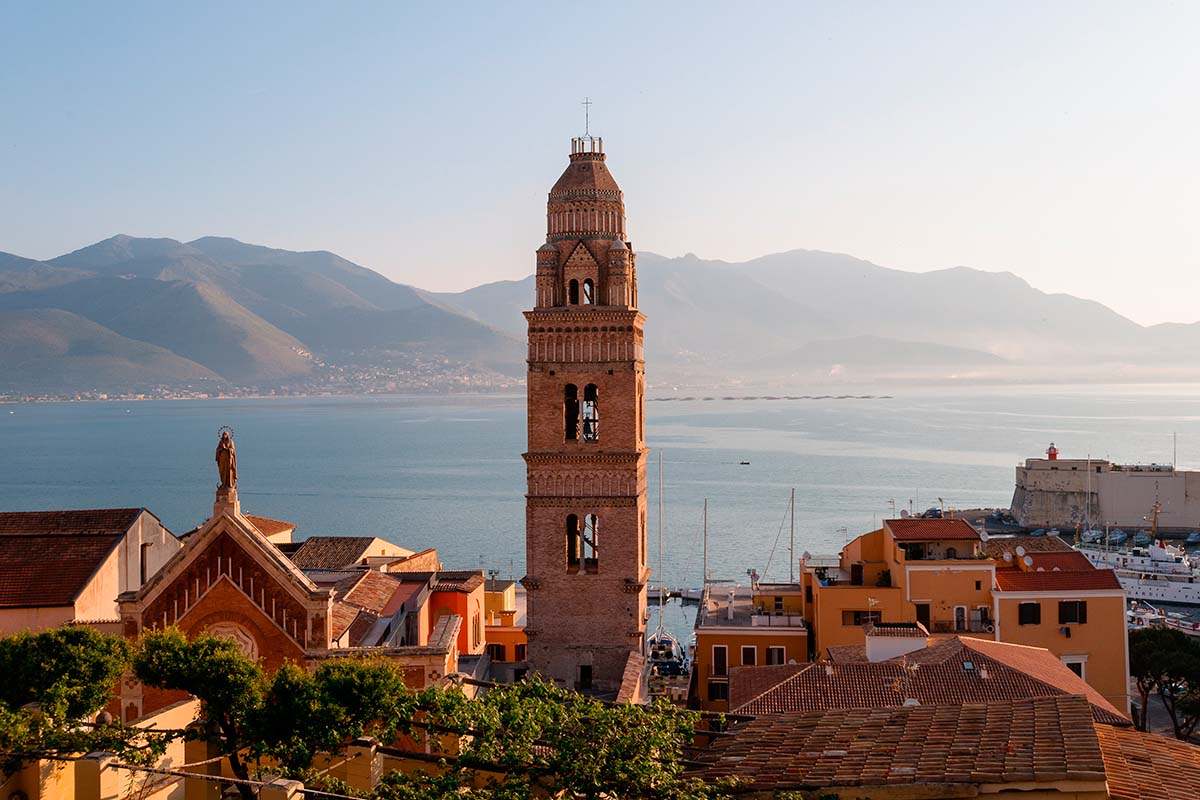
The Cathedral of Saints Erasmo and Marciano and of Santa Maria Assunta: the bell tower
The crypt
The cathedral was enlarged in 1620 with the construction of a special crypt to house the relics of Saints Erasmus, Marciano, Probo, Casto, Secondino and Eupuria.
The crypt dates back to the 17th century and was designed by the Neapolitan architects Lazzari. The walls covered with polychrome marble and the vaults decorated with stuccoes and frescoes were made by Giacinto Brandi in the 17th century.
The most outstanding elements of the crypt are the altar frontal and the balustrade, characterized by a great variety of polychrome marbles and precious stones. The crypt is accessible through a wonderful bronze door, where you can see a representation of the city as it was in 1692.
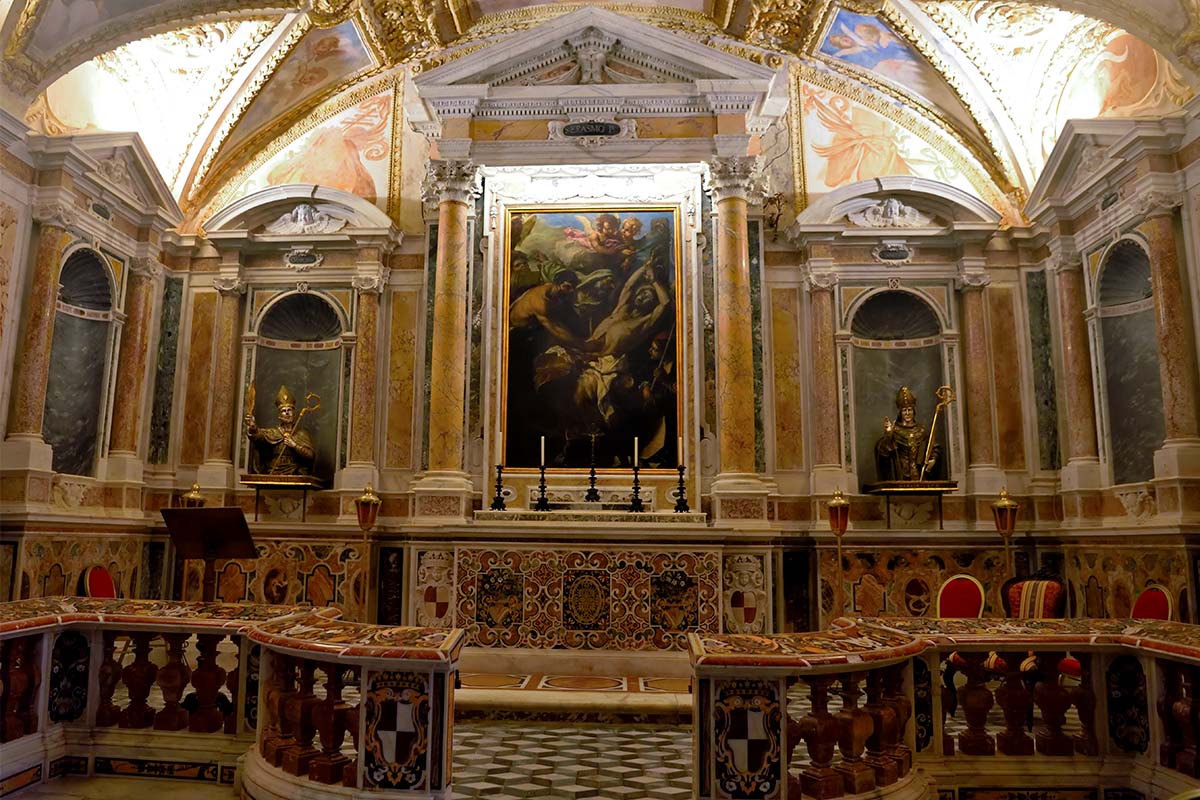
The Cathedral of Saints Erasmo and Marciano and of Santa Maria Assunta: the crypt
Another noteworthy element is the Easter candelabrum of Gaeta, which is 3.50 meters high. It is a kind of honorific column, divided into forty-eight panels: half of them narrate the "gesta Christi" and the other half the "passio" of St. Erasmus.
After having admired this beautiful cathedral and having visited the city of Gaeta, you cannot miss the 7 beaches in Gaeta and surroundings.
Useful information
- TIMETABLES
- Opening times (Monday-Sunday)Morning: from 10 am to 12.30 pmAfternoon: from 5 pm to 7 pm



 PORT MOBILITY CIVITAVECCHIA
PORT MOBILITY CIVITAVECCHIA











